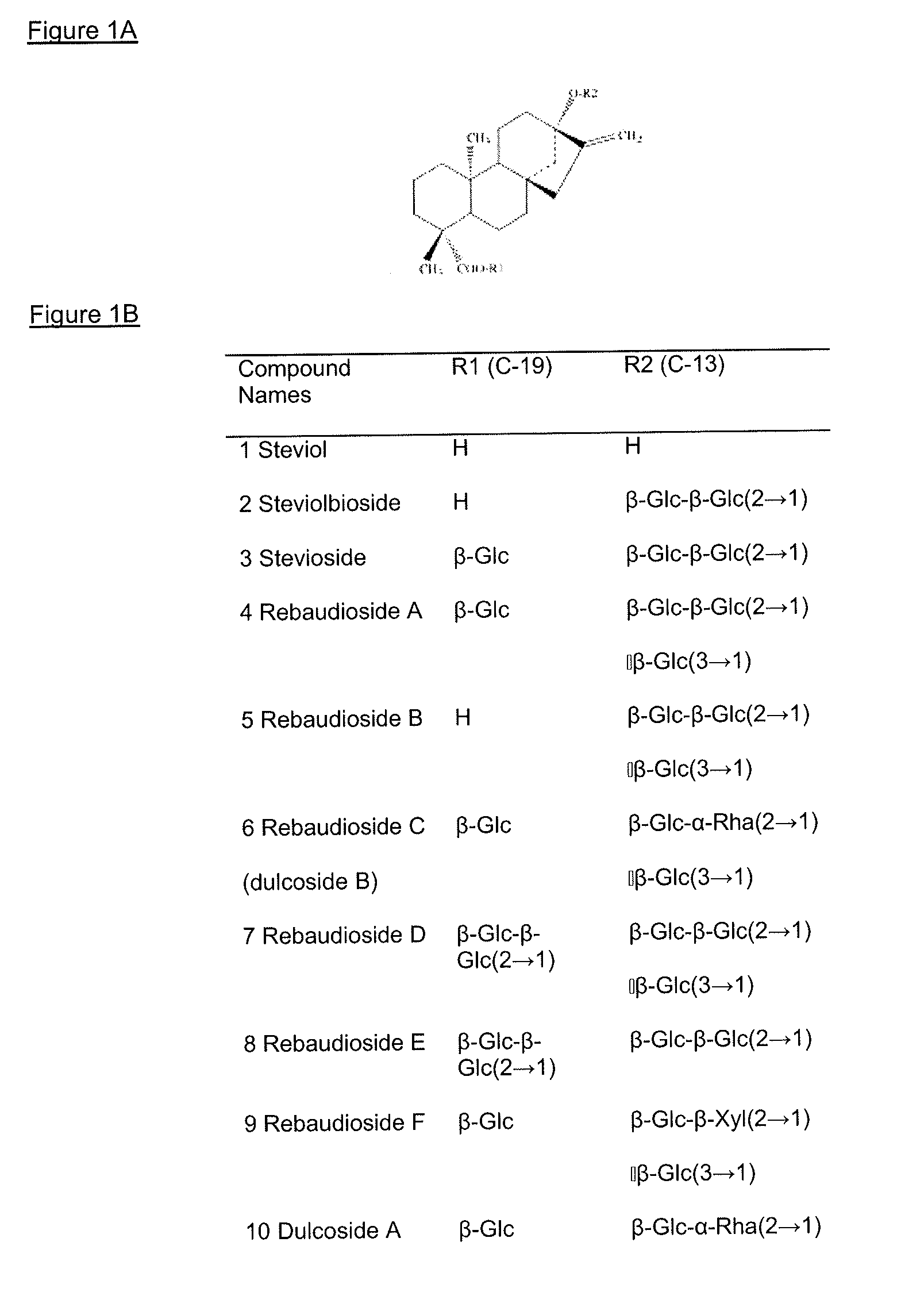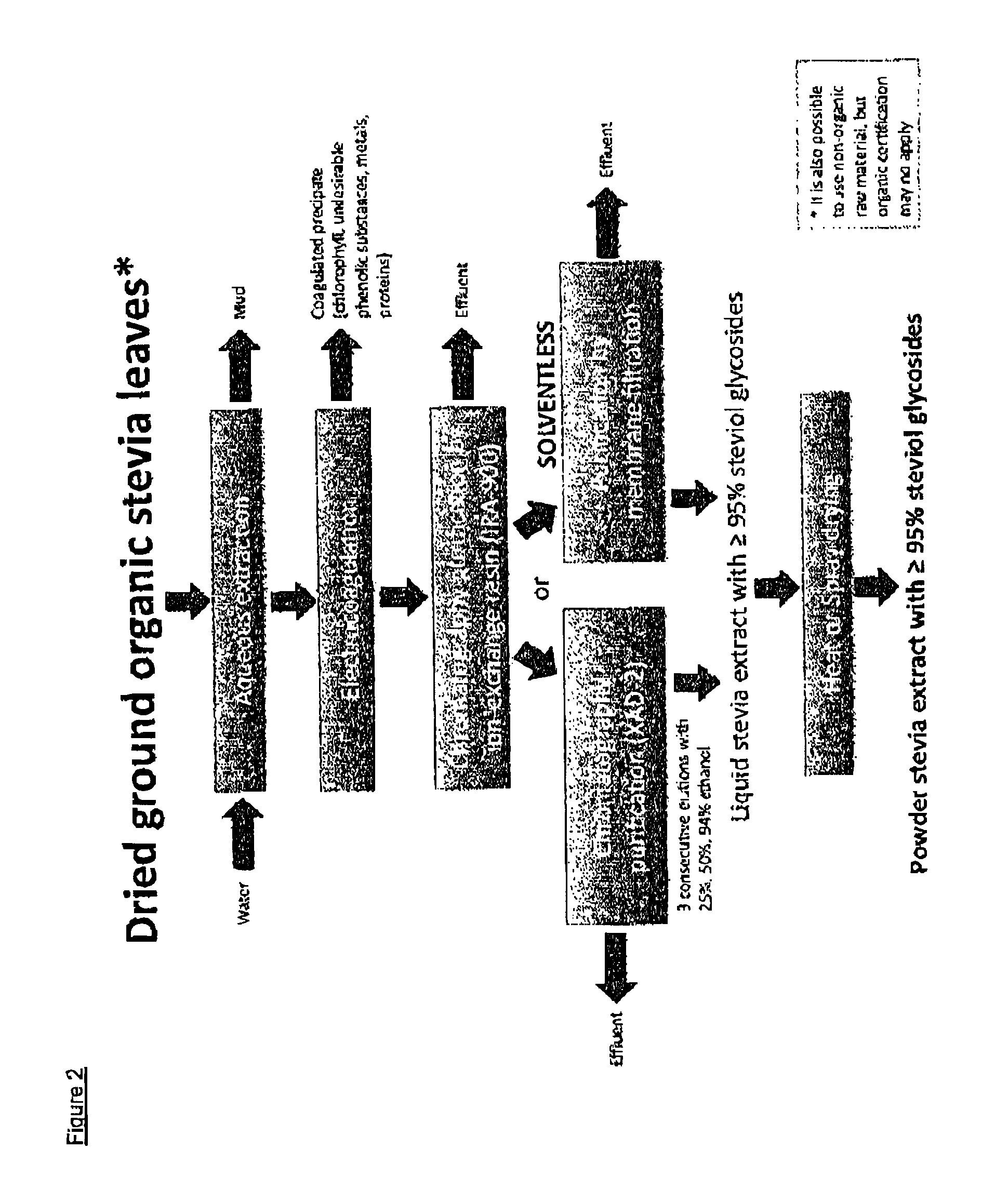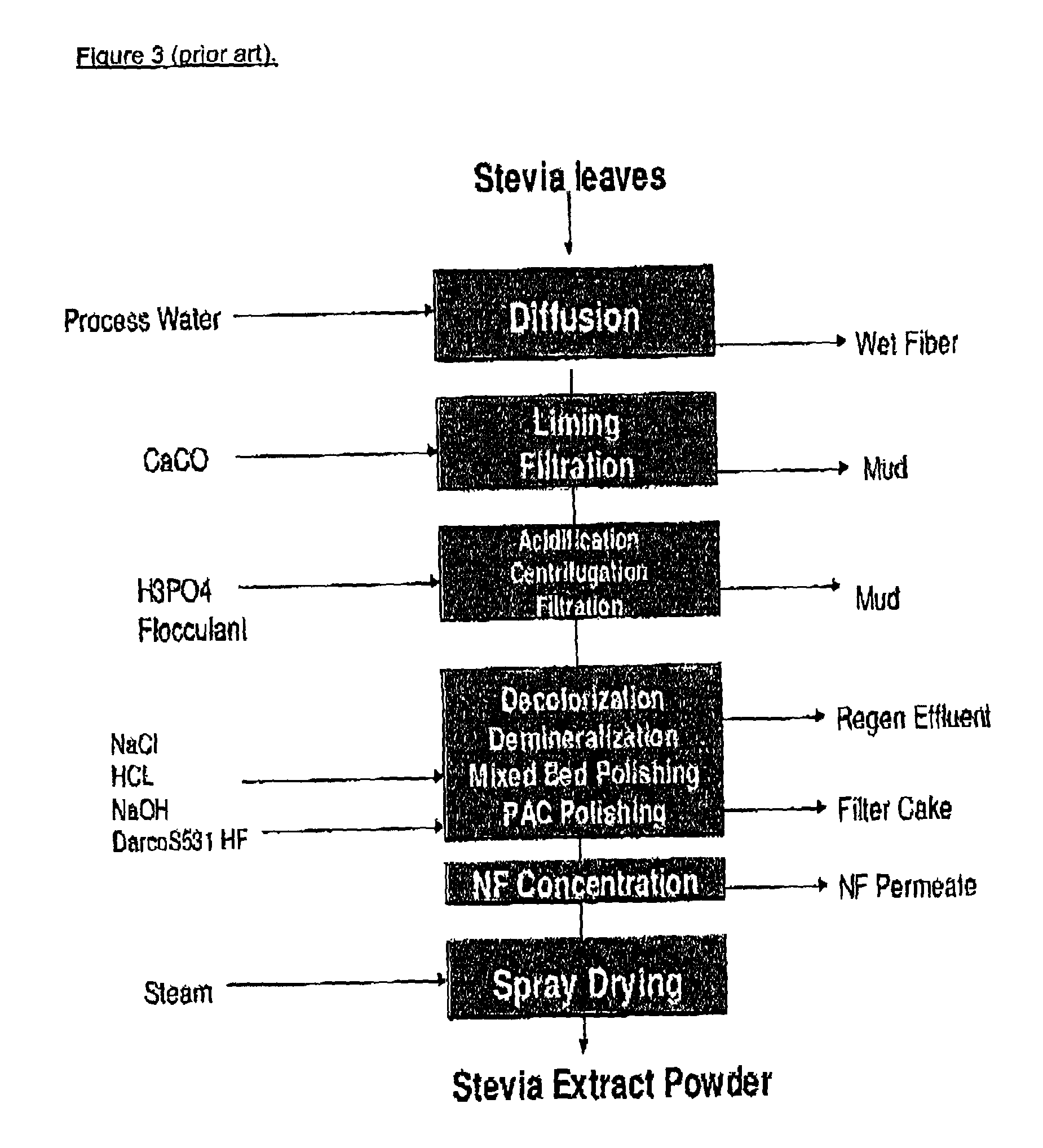Extraction method for providing an organic certifiable Stevia rebaudiana extract
a technology of organic certifiable stevia and extraction method, which is applied in the direction of biocide, plant ingredients, sugar derivatives, etc., can solve the problems of not being environmentally friendly, difficult to obtain, and difficult to obtain, so as to achieve the effect of facilitating depigmentation
- Summary
- Abstract
- Description
- Claims
- Application Information
AI Technical Summary
Benefits of technology
Problems solved by technology
Method used
Image
Examples
example 1
Effect of Concentration of Starting Raw Material on Yield of Sweetening Compounds
[0124]The effect of the raw material concentration (raw material to solvent ratio or percentage) on the extraction yield of sweetening compounds (i.e., stevioside and rebaudioside A) was examined. The raw material (i.e., stevia leaves) were collected and dried. Once dried, the leaves were grinded and subsequently heated for 4 hours at 110° C. The grinded and dried leaves were then subjected to two hot water extractions: the first being at a temperature of 85° C. for 30 min, and the second being at a temperature of 60° C. for 30 min. FIG. 4 shows the percent yield (relative yield) following the above extraction for three different concentrations (w / v) of raw material: 7%, 12% and 14%. A starting raw material concentration of 7% resulted in the highest relative yield of sweetening compounds (i.e., over 90%) compared to starting raw material concentrations of 12% and 14% (below 75%). A starting concentrati...
example 2
Effect of Temperature of Extraction on Yield of Sweetening Compounds
[0125]The effect of the temperature of the extraction solvent used on the extraction yield of sweetening compounds (i.e., stevioside and rebaudioside A) was examined. In the present example, double extractions were performed and a concentration of starting material of 7% (w / v) was used for each extraction. Furthermore, each extraction was performed for about 30 minutes. FIG. 5A shows the results from an extraction with water while FIG. 5B shows the results from an extraction with ethanol. In each case, the yield was calculated as follows. For the yield of sweetening compounds, the following formula was used: [quantity of steviosides+rebaudiosides in the extract] / [quantity of steviosides+rebaudiosides found in the leaves of stevia]×100%.
[0126]FIG. 5A shows the results from an extraction with hot water at two different temperatures. For the extraction labeled “60° C.”, two successive extractions were performed in hot ...
example 3
Effect of Ethanol Concentration on the Yield of Sweetening Compounds and Quercetin
[0128]In the current example, extractions were performed and yields were calculated as described in Example 2, unless otherwise indicated. FIG. 6 shows the results from double extractions performed with increasing concentrations of ethanol on the yield of sweetening compounds (i.e., stevioside and rebaudioside A; black bars). Of the four ethanol concentrations shown in FIG. 6 (i.e., 0%, 60%, 80% and 94%), the ethanol concentration of 60% resulted in the highest yield of sweetening compounds.
PUM
| Property | Measurement | Unit |
|---|---|---|
| temperature | aaaaa | aaaaa |
| molecular weight | aaaaa | aaaaa |
| temperature | aaaaa | aaaaa |
Abstract
Description
Claims
Application Information
 Login to View More
Login to View More - R&D
- Intellectual Property
- Life Sciences
- Materials
- Tech Scout
- Unparalleled Data Quality
- Higher Quality Content
- 60% Fewer Hallucinations
Browse by: Latest US Patents, China's latest patents, Technical Efficacy Thesaurus, Application Domain, Technology Topic, Popular Technical Reports.
© 2025 PatSnap. All rights reserved.Legal|Privacy policy|Modern Slavery Act Transparency Statement|Sitemap|About US| Contact US: help@patsnap.com



